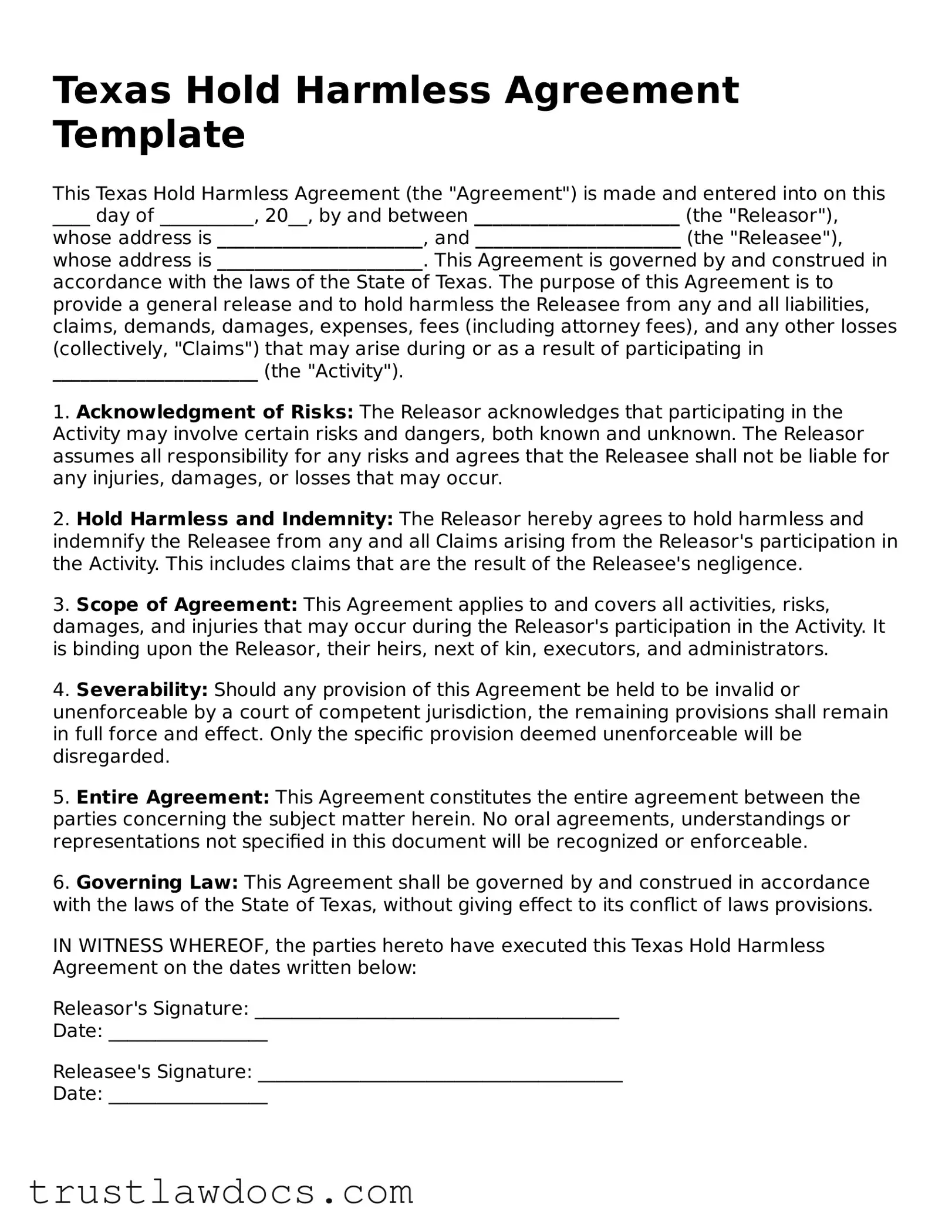What is a Texas Hold Harmless Agreement?
A Texas Hold Harmless Agreement is a legal document where one party agrees not to hold another party responsible for any injuries, damages, or losses that may occur during a specified activity, event, or under certain conditions. It is commonly used in Texas to limit legal claims against property owners, service providers, or event organizers.
When should I use a Texas Hold Harmless Agreement?
This type of agreement should be used when one party is taking on activities that involve risk, such as construction work, use of facilities, or participation in events. It's particularly important when the activities could lead to potential lawsuits due to injuries or damages.
Who benefits from a Texas Hold Harmless Agreement?
Both parties can benefit. The party providing the service, space, or activities benefits by having protection against lawsuits or claims stemming from accidents or damages. The party signing the agreement benefits by gaining access or permission to engage in the activity or use the facilities, fully aware of the risks involved.
Is a Texas Hold Harmless Agreement legally binding?
Yes, when properly executed, a Texas Hold Harmless Agreement is a legally binding contract. For it to be enforceable, it must be clear, mutually agreed upon, and signed by both parties. It's also essential that the agreement does not exempt parties from gross negligence or intentional harms.
Does the agreement protect against liability for damages caused by negligence?
It can, depending on how the agreement is worded. Many hold harmless agreements are designed to protect against liability for damages, including those resulting from negligence, but they cannot protect against gross negligence or intentional misconduct.
Can a Texas Hold Harmless Agreement be customized?
Yes, these agreements can and often should be customized to reflect the specific risks associated with the activity or service, the needs of the involved parties, and to comply with Texas law. Tailoring the agreement ensures that all potential risks are adequately covered.
What should be included in a Texas Hold Harmless Agreement?
The agreement should include the names and details of the parties involved, a description of the activity or service, the risks associated with the activity, the scope of the hold harmless provision, any limitations, and the duration of the agreement. It should also be signed and dated by both parties.
Are there any limitations to a Texas Hold Harmless Agreement?
Yes, these agreements cannot exempt a party from responsibility for gross negligence, intentional misconduct, or illegal acts. Additionally, the effectiveness of the agreement can be subject to interpretation by courts, especially if the language is not clear or overly broad.
Where can I get a Texas Hold Harmless Agreement?
It's advisable to obtain a customizable template from a reputable legal forms provider or to consult with a legal professional who can draft an agreement specifically tailored to your needs and compliant with Texas law.
